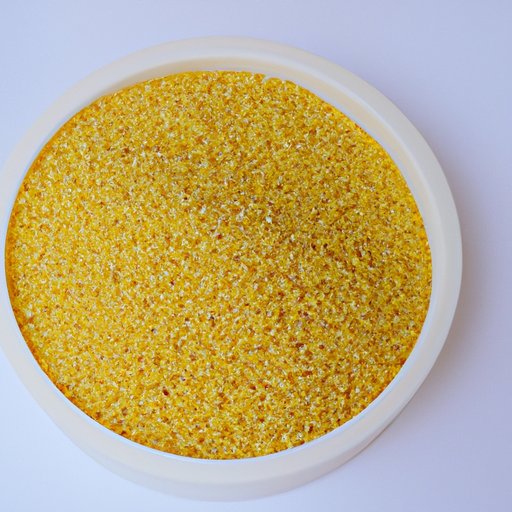
I. Introduction
Millet is a nutritious grain that is packed with vitamins, minerals, and antioxidants. It is also gluten-free, making it an excellent alternative for individuals with gluten intolerance. However, many people are unsure of how to cook millet, and as a result, they are missing out on the numerous benefits of this versatile grain. In this article, we will explore how to cook millet, its nutritional benefits, and how it can be incorporated into our diet.
II. Preparation
Before cooking millet, it is essential to rinse it thoroughly. This helps to remove dirt and dust and prevents the millet from clumping together during cooking. To rinse millet, place it in a fine-mesh strainer and rinse it under cold running water for a few minutes until the water runs clear.
After rinsing, the millet should be pre-soaked for at least an hour. The soaking process helps to improve the texture of the millet and reduce the cooking time. To prepare millet for cooking, mix one cup of millet with two cups of water or broth in a pot and bring to a boil.
III. Cooking Process
The ratio of water to millet is crucial when it comes to cooking. For every cup of millet, use two cups of water or broth. Reduce the heat to low, cover the pot, and let it simmer for 20-25 minutes or until all the water is absorbed. After cooking, let the millet stand for five minutes before fluffing it with a fork.
To ensure perfectly cooked millet every time, it is important not to lift the lid during the cooking process. This can cause the steam to escape and alter the cooking time. Additionally, using a non-stick pot can prevent the millet from sticking to the bottom or sides of the pot.
IV. Nutritional Benefits
Millet is an excellent source of nutrients and has numerous health benefits. It is high in fiber, protein, vitamins, and minerals, making it an excellent addition to a balanced diet. Millet contains antioxidants, which help to protect the body against harmful oxidative stress and reduce the risk of chronic diseases. It is also high in magnesium, which is essential for healthy bone development and nerve function.
There are several ways to incorporate millet into our diet. It can be cooked as a side dish or used as a base for salads. It can also be used to make porridge, pancakes, and even used as a gluten-free alternative to rice in dishes such as pilaf and risotto.
V. Conclusion
Now that you know how to cook millet, you can enjoy the numerous nutritional benefits that come with this versatile grain. It is easy to prepare, affordable, and a great addition to any dish. So what are you waiting for? Try cooking millet today and take the first step towards a healthier and more balanced diet.





